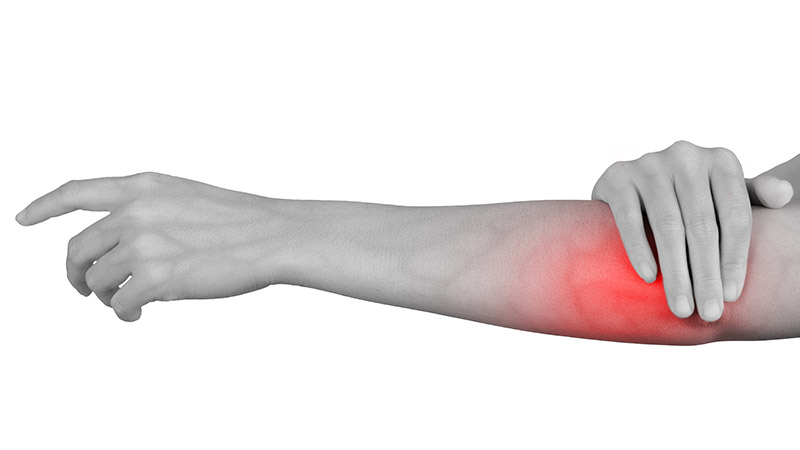Due to repeated strain, fraying or tearing may develop in the lateral epicondyle, the point where the muscles and the bone are attached together around the elbow. This condition is referred to as lateral epicondylitis in medicine and tennis elbow in colloquial use. The reason why this problem is known as “tennis elbow” is that it is commonly observed in people who do racket sports such as tennis.
Tennis Elbow Patients
Any sports or recreational activity, manual labor, or crafts that strain the forearm can cause tennis elbow. Squeezing cleaning rags, using screwdrivers or pliers, painting are examples to such activities that can strain the elbow. However, it is the backhand stroke in tennis that leads to lateral epicondylitis most commonly. As far as tennis players are concerned, it would be more appropriate to categorize tennis elbow as an occupational disease rather than sports injury. Some of the occupational groups who are most likely to be affected by this problem are:
- Plumbers
- Painters
- Weavers
- Car mechanics
- Tennis players
Any job that requires the excessive use of the forearm can be included in the list above. Tennis elbow can be observed in all ages but it strikes between the ages of 30 and 50 most. Still, this deformity can sometimes occur without any specific reason.
Symptoms of Tennis Elbow
The most significant symptom of tennis elbow is pain on the outer side of the elbow that spreads to the forearm. Pain is particularly felt on the bony eminence called the lateral epicondyle. When the wrist is bent upwards or an object is held in one’s hand, muscles along the back of the forearm are contracted, straining the attachment point on the outer side of the elbow. This pain grows more severe from time to time. It becomes intensified while holding a teapot, squeezing a cleaning rag, or using tools such as a screwdriver or pliers. As the density of pain increases, manual labor becomes uncomfortable and this affects daily activities. Sometimes the pain can even persevere while resting.
Diagnosis of Tennis Elbow
A thorough medical examination and listening to the complaints of patients is often very telling and tennis elbow is rather easy to diagnose. Still, physicians may ask for x-ray images to investigate underlying causes. MR examination can help physicians to come up with a decisive conclusion concerning lateral epicondylitis.
Treatment of Tennis Elbow
Mild complaints may be addressed by non-surgical tennis elbow treatment that may involve application of cold compress, elbow pads, anti-inflammatory medication along with PRP (platelet rich plasma), cortisone injection, and physiotherapy. If the desired result is not achieved through these methods, a lateral epicondylitis surgery is applied.
Treatment of Tennis Elbow with PRP
PRP (platelet rich plasma) involves injecting the plasma acquired from patient’s own blood back to the body. PRP gives good results if the lateral epicondyle has been subject to severe fraying. Single injection is sufficient in most cases though some patients may a second or third PRP application. For more information, please refer to our article on PRP.
Tennis Elbow Surgery
If non-surgical methods fail to treat the lateral epicondyle, tennis elbow surgery is considered. The operation is performed under local anaesthesia. First, the surgeon isolates the frayed tendon. After restoring the problematic area, the surgeon then reattaches the tendon. Patients use shoulder slings for about three weeks after the surgery. This helps patients to rest the arm. After three weeks, patients return to their daily routines. However, it should be noted that tennis elbow is a persistent condition and there is always possibility of recurrence even after surgical intervention.
 EN
EN TR
TR AR
AR RU
RU